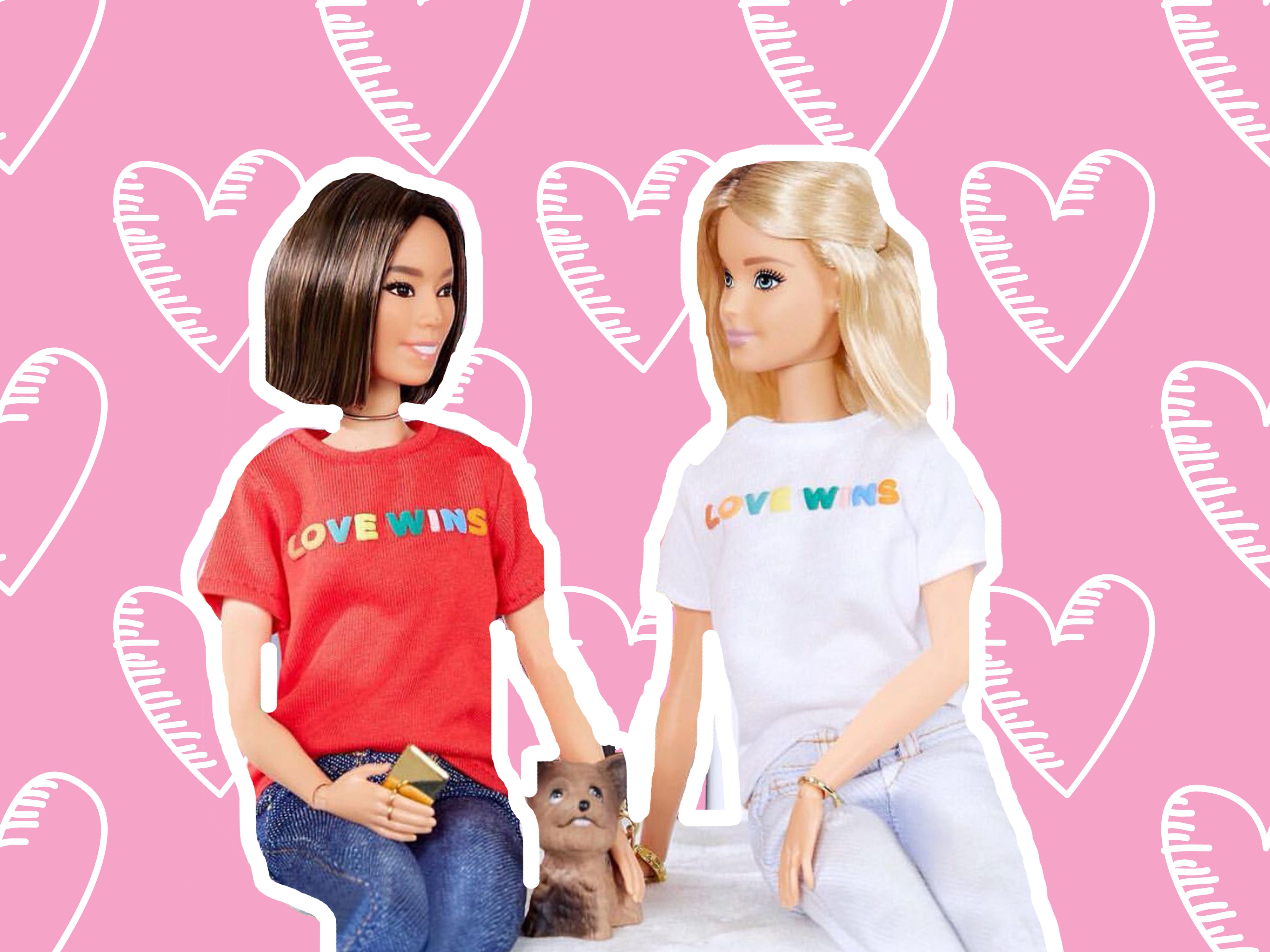Does Barbie really have a girlfriend now?
Following a hijab-wearing Barbie, a black presidential Barbie and Barbie in a wheelchair, is 2021 finally serving us an LGBTQ+ plastic doll? Sophie Gallagher investigates


Your support helps us to tell the story
From reproductive rights to climate change to Big Tech, The Independent is on the ground when the story is developing. Whether it's investigating the financials of Elon Musk's pro-Trump PAC or producing our latest documentary, 'The A Word', which shines a light on the American women fighting for reproductive rights, we know how important it is to parse out the facts from the messaging.
At such a critical moment in US history, we need reporters on the ground. Your donation allows us to keep sending journalists to speak to both sides of the story.
The Independent is trusted by Americans across the entire political spectrum. And unlike many other quality news outlets, we choose not to lock Americans out of our reporting and analysis with paywalls. We believe quality journalism should be available to everyone, paid for by those who can afford it.
Your support makes all the difference.Barbie and Ken were the original it couple. Sorry Gigi and Zayn, Barbie and Ken, who should have been given a Brangleina-style-moniker – we’re thinking Karbie? – had the McMansion dream house, the full wardrobe and the pink jeep, long before anyone else.
But, as with all Hollywood romances, they’re never as rock solid as they appear on the box, and it seems like Barbie might have a new love in her life. In true modern-relationship-style, they made it Instagram official before setting Twitter on fire with rumours and speculation – asking, does Barbie really have a girlfriend now?
The picture in question was originally shared on the official Barbie Instagram back in 2017, and features Barbie and a female friend holding hands, petting a dog and wearing matching “Love Wins” rainbow T-shirts. Although the picture is three years old, comments have been pouring in over the last 24 hours. From “Barbie the bi icon” to “Historians will say they were just close friends” and, quite simply, “Validation for everyone who used to scissor their Barbie". (Ahem).
Fuel was only added to the frenzy when social media influencer, Aimee Song – whose doll doppelganger is the second doll featured in the picture (she collaborated with the makers Mattel in 2017) – joked on Twitter: “I am the girlfriend.” Cue 26,000 adoring likes and more than 4,000 retweets.
For the record, Mattel has not confirmed whether Barbie is queer (The Independent has asked for clarity) but has positioned her, at the very least, as an ally. The T-shirt campaign in 2017 was designed to raise money for the Trevor project to help LGBTQ+ youth in crisis. The T-shirts worn by the dolls were replicas of life-size T-shirts being sold by Song.
Then, in 2019, Mattel released a line of gender-inclusive dolls with different clothing and hairstyles to choose-your-own appearance. Monica Dreger from Mattel explained at the time: “There were a couple of gender-creative kids who told us that they dreaded Christmas Day because they knew whatever they got under the tree, it wasn’t made for them.”
the Barbie doll universe long had only unrealistic body types, blonde hair and whiteness
In fact, the Barbie doll universe – long known for promoting unrealistic body types (I mean, where are the genitals for a start), blonde hair, whiteness, and a career as a vet as the only taboo-breaking future for women – has been making strides to be more inclusive beyond sexuality.
In 2016, Mattel released a range of Barbies with diverse hair, face and body types, saying that it hoped to promote healthy self-image and realistic dolls so that girls could find one that spoke to them. A year on, the first hijab-wearing Barbie, based on American fencer Ibtihaj Muhammad. Later, more inclusive body types came along, including a Barbie with a wheelchair and a prosthetic leg – designed with help from people in those communities.
In 2020, the progress continued with a Barbie who had the skin condition vitiligo. Another doll was created to show alopecia. Suddenly - after years of repeating the same formula - Mattel was offering 22 skin tones, 76 hair styles, 94 hair colours and 13 eye colours. Although far from universal, it was a step in the right direction. And Barbie was no longer keeping quiet on social issues and issues deemed political.
The YouTube account for Barbie, which has 9.7 million subscribers, released a video addressing white privilege. An animated version of the doll speaks about her societal advantages as a white person and the Black Lives Matter movement. She also did a separate video on racism. For an account that only previously had an extensive catalogue of videos on bedroom makeovers and lemon sponge cake recipes, the platform visibility was clear.
Last year also saw the sale of Barbie’s new “campaign team” set featuring a campaign manager, a fundraiser, a voter and a black female doll as a presidential candidate. And with Kamala Harris soon to take her place in the White House as the first ever female (and POC) vice president, all we can say is, Barbie you called it.
Whether Barbie is in fact bisexual, gay, or just an ally to the community who happens to be rocking a great rainbow T-shirt, aligning mainstream children’s brands with the topics of sexuality, race, and politics, begins to show that Barbie could actually have meant it when she said: "You can be anything."


Join our commenting forum
Join thought-provoking conversations, follow other Independent readers and see their replies
Comments